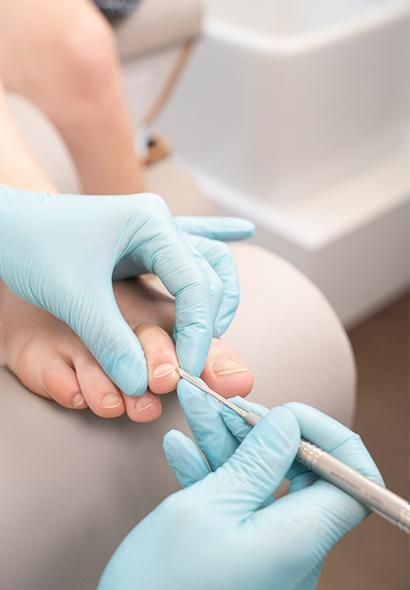Nail files

Would you like to be part of the next chapter in our story?
We provide inspiring stories, top tips and informative discussion topics within the area that interests you most: podiatry and all things feet! Subscribe our newsletter & get free delivery!
Subscribe now
HELLMUT RUCK nail files for application in podiatry
Whether it is a coarse-grained foot file or a precise corner file, with the help of which even hard-to-reach nail areas can be processed: Files of various types are among the most important podiatry tools. While special planes and foot files are used to remove horny areas and smooth the skin of the feet, nail files are used for processing the toenails. At HELLMUT RUCK we offer you a large selection of high-quality nail files for different purposes.
Professional nail files ideal for different applications
Nail files are an indispensable instrument in the practice of podiatry and foot care for treating nail disorders or problems. With you, nail files are not only used to shorten the nails, but are also suitable for changing the type and infrastructure of the nails. Nail files come in different designs and materials to meet the different needs of your patients.
The use of the right nail file can determine successful outcomes. The filing effect with you depends on both the material and the type of file.
So-called corner files are extremely precise nail instruments with a single or double-sided filing surface, which can be straight or slightly curved. They have been used mainly for filing and uncovering corners in the nail fold.
So-called flexi files, which are available in plastic and stainless steel, enable controlled and precise work thanks to their slightly higher versatility. They usually have a double-sided grain, which is available in different degrees. While plastic nail files should only be used once, stainless steel nail files can be used several times after appropriate disinfection or sterilisation. As a result, they are an environmentally and cost-conscious alternative to disposable files.
Glass nail files also combine precise function with good hygiene properties.
They can be placed in special disinfectant solutions or sterilised thanks to heat, thus preventing the transmission of infections and increasing safety in your practice.
Files for nails made of metal, for example, stainless steel or titanium, are extremely robust and resistant and can also be used for more severe calluses of the nails. Glass files are in most cases made of hardened glass and provide with an extremely fine-grained surface. They file the nails extremely gently and are also suitable for precise corrections.
In addition to the application of manual nail files, it is also possible to shape and process the nails using electric files. With the help of rotating attachments, so-called skin and nail cutters wear away calluses and thickened nails and smooth the surface. Here, too, the grain size of the different burs and grinding attachments is decisive for the result.
As with all instruments and tools that have been used in the podiatric field, nail files must also be correctly cleaned and disinfected after use to prevent the transmission of bacteria, germs or fungi. Compliance with hygiene standards is of elementary importance in the podiatry sector - both for the health and safety of practitioners and patients. We will be happy to inform you about hygiene in the workplace and advise you on the selection of ideal hygiene consumables for your podiatry practice or treatment environment. With more than 90 years of experience in the field of podiatry, we should be pleased to assist you as foot care professionals with any questions you may have.
Do you already know the RUCK Academy? This platform offers both career changers and practising podiatrists and foot care professionals many interesting training and further education opportunities in a future-oriented industry. In webinars and workshops, our lecturers impart the latest findings from research, development and practice - as a result, you as a practitioner always have your finger on the pulse and can offer your patients optimum treatment! Find out more about our comprehensive programme of training and further education - even for "old hands" in the field of podiatry, there are always new and interesting things to discover.





























































